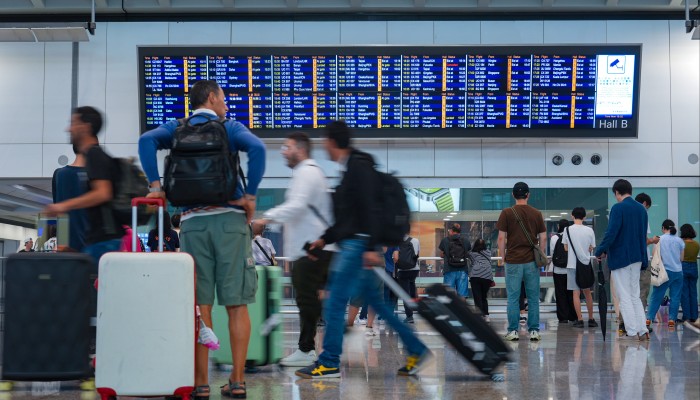Hong Kong Airport Grounded for 36 Hours as Typhoon Ragasa Approaches

As Typhoon Ragasa — the strongest tropical cyclone globally so far this year — neared Hong Kong, airlines operating out of one of the world’s busiest airports faced more than just widespread flight cancellations and revenue losses.
In preparation for the typhoon’s hurricane-force winds and heavy rainfall expected on Wednesday, approximately 80% of aircraft from the four major airlines based in the city were either grounded or relocated to airports across Japan, China, Cambodia, Europe, Australia, and other regions, according to flight tracking data. Most of the region’s business jet fleet also left Hong Kong ahead of the storm, according to the local business aviation centre.
All flight arrivals and departures at the city’s airport — a major global hub for cargo and international passengers — were suspended for 36 hours starting Tuesday evening.
The city’s main airline stated earlier in the week that the storm would have a “significant impact” on its operations and announced the cancellation of over 500 long-haul and regional flights. The airline, which operates a fleet of 179 passenger and cargo aircraft, said it was moving some planes out of the city and expected a gradual return to normal operations beginning Thursday and continuing into Friday.
Authorities issued the highest-level storm warning early Wednesday, advising businesses and public transport to suspend operations.
Relocating aircraft during severe weather is a common practice in the aviation industry, both to minimise risk of damage and to meet insurance requirements. At least 14 aircraft from the city’s largest airline were flown to Phnom Penh in Cambodia on Tuesday, according to tracking data.
Airlines may also reposition planes in advance to ensure they are ready for use when conditions improve. During such events, aircraft may be stored in hangars, weighed down with extra fuel, or secured with tie-downs — especially in the case of smaller planes.
Greater Bay Airlines, a smaller local carrier with a fleet of seven aircraft, confirmed that it had moved all of its planes out of the city for safety reasons. Flight data indicated its Boeing 737s had been sent to airports in Japan and China.
Similarly, nearly all of the 28 aircraft operated by Hong Kong Airlines appeared to be positioned outside of Hong Kong.
Some aircraft from the main airline and its low-cost subsidiary remained in the city, based on tracking data. The two carriers did not comment on how the remaining aircraft were being secured. However, a previous internal publication from the main airline in 2017 noted that during earlier cyclones, some aircraft had been stored in airport hangars while others were relocated to alternate destinations.
